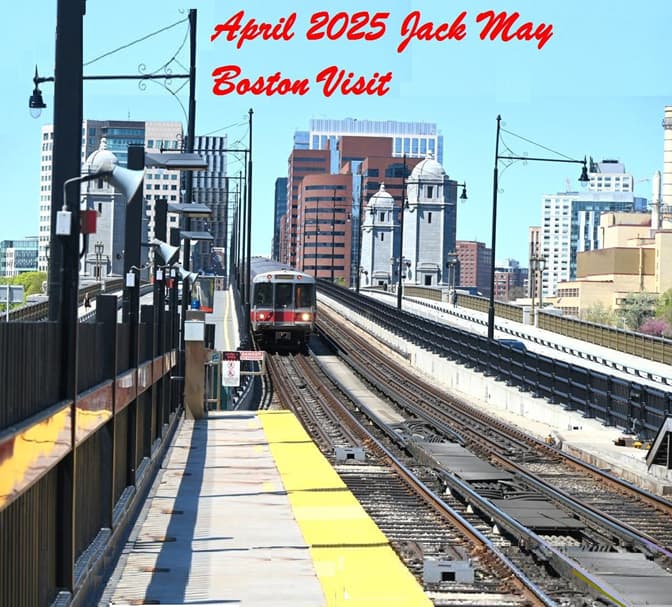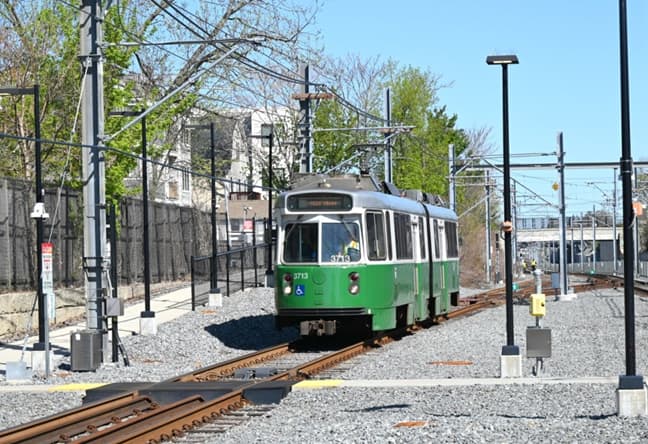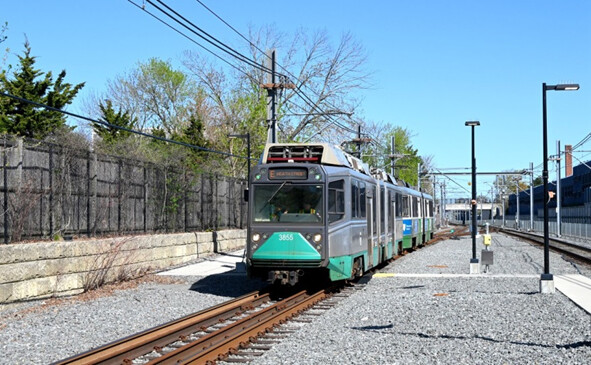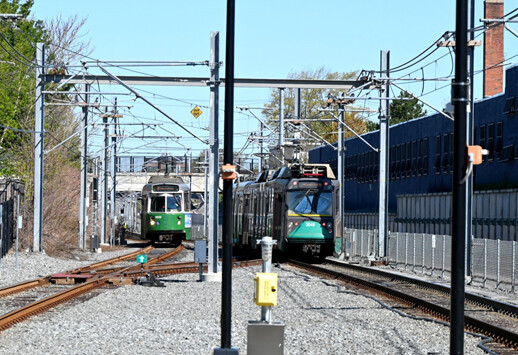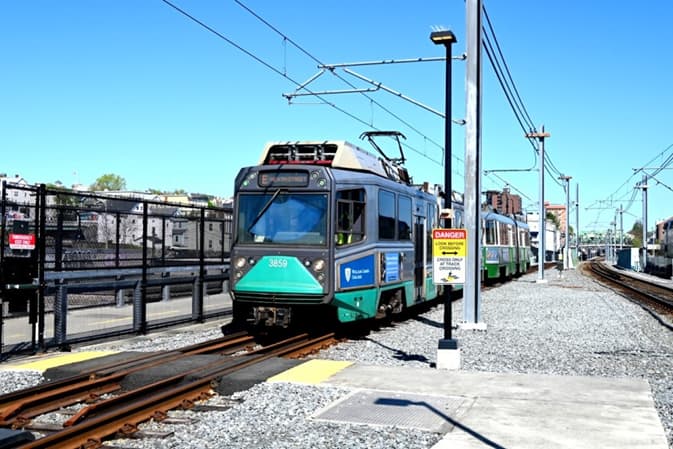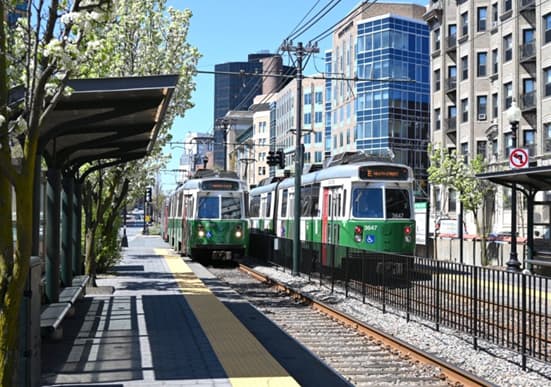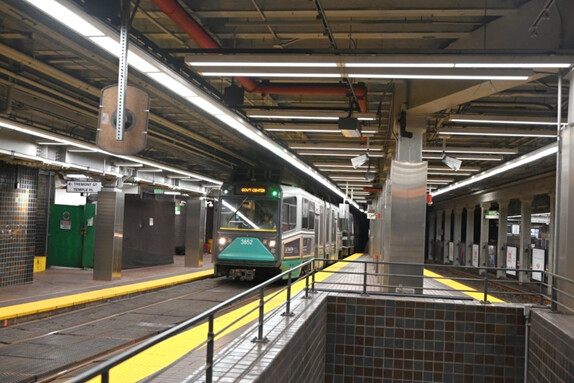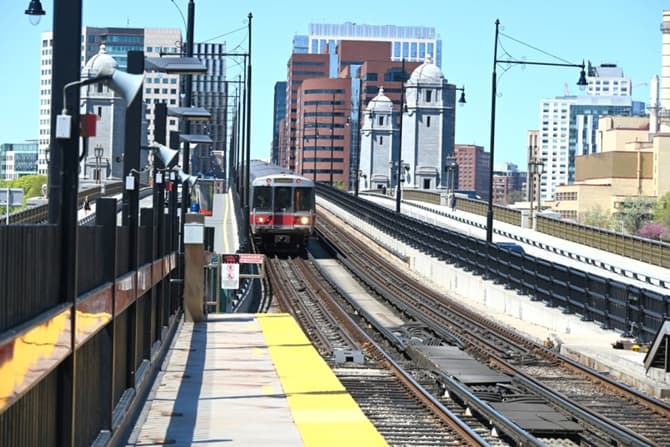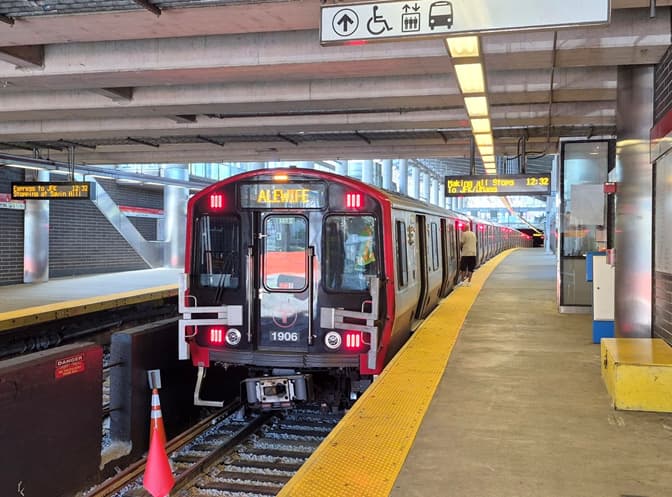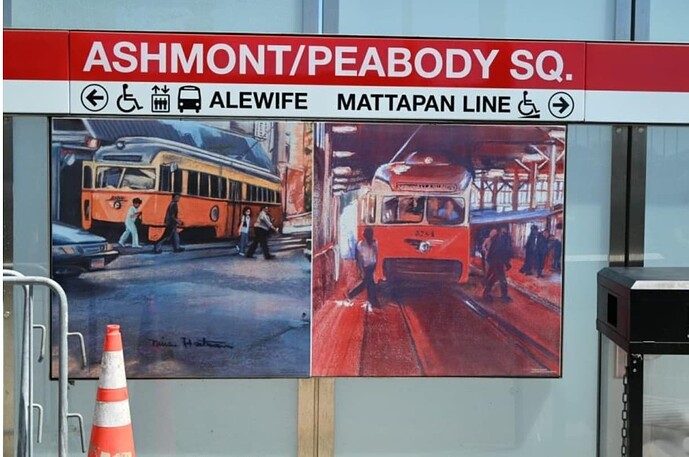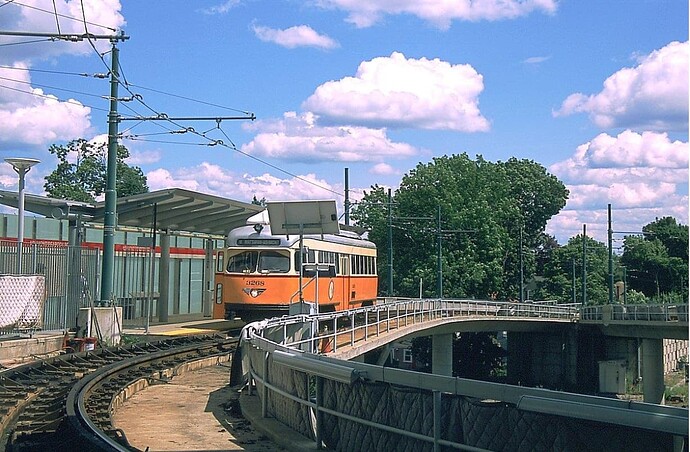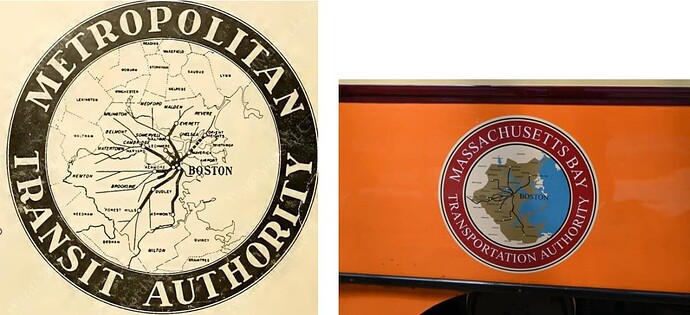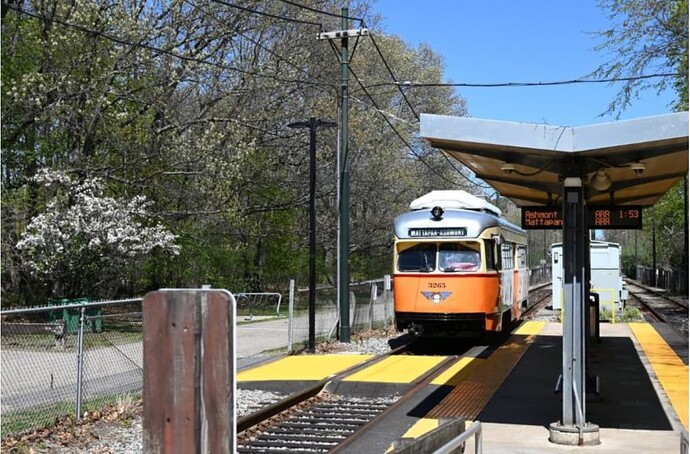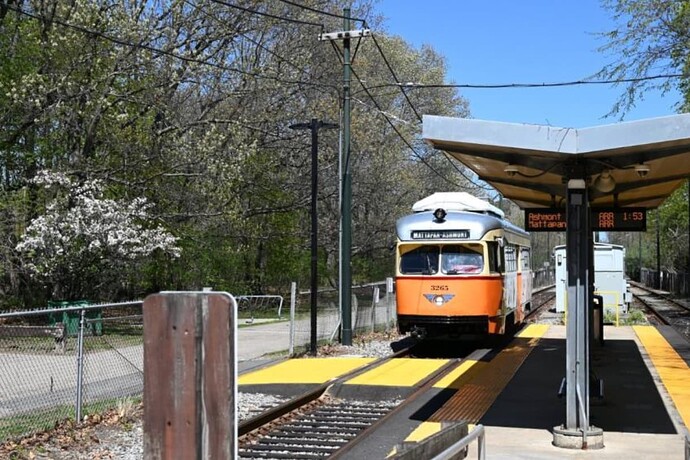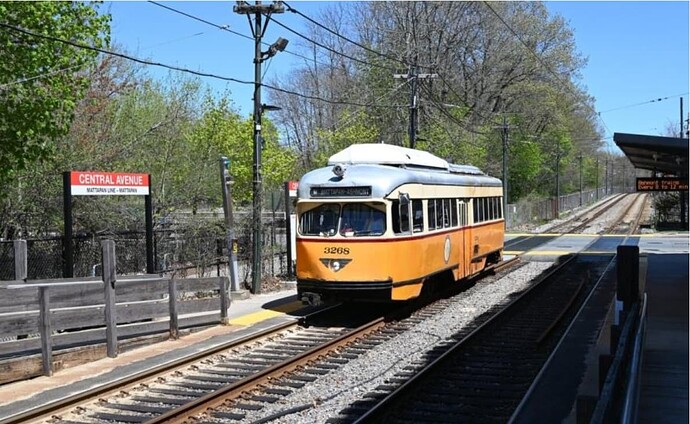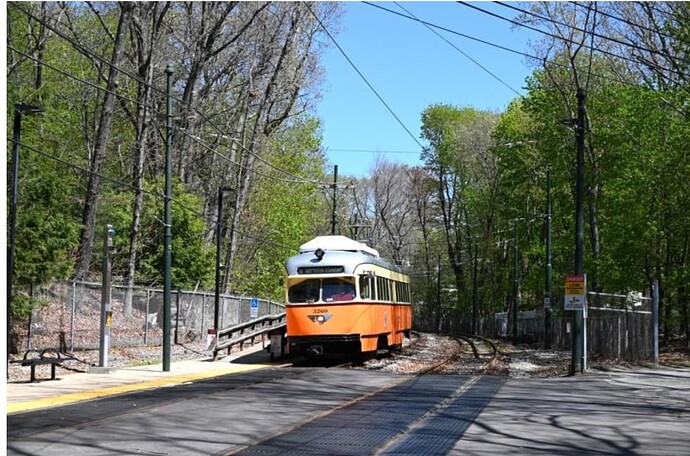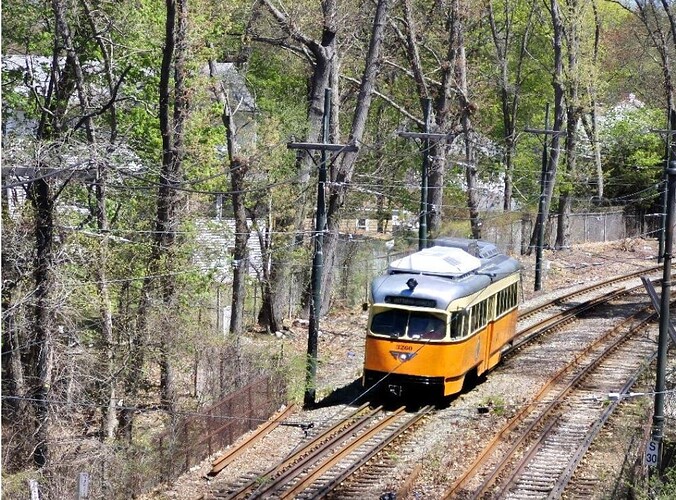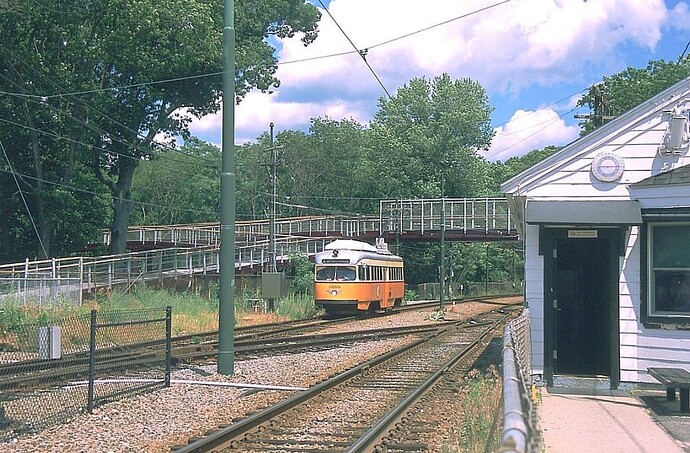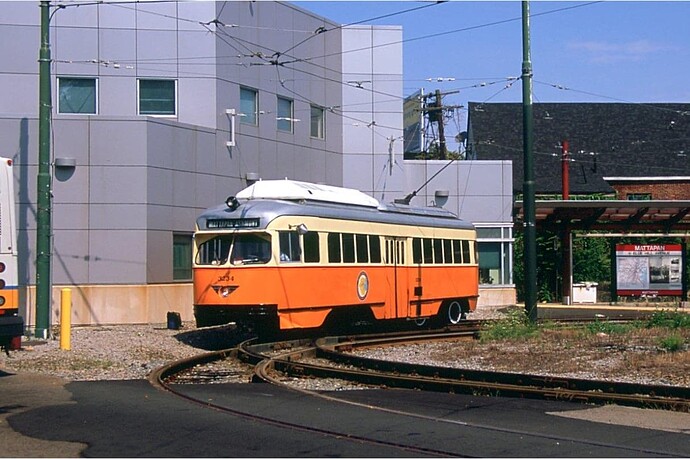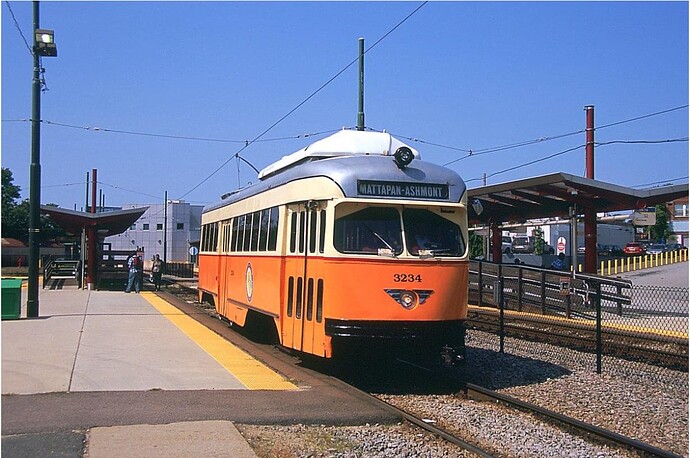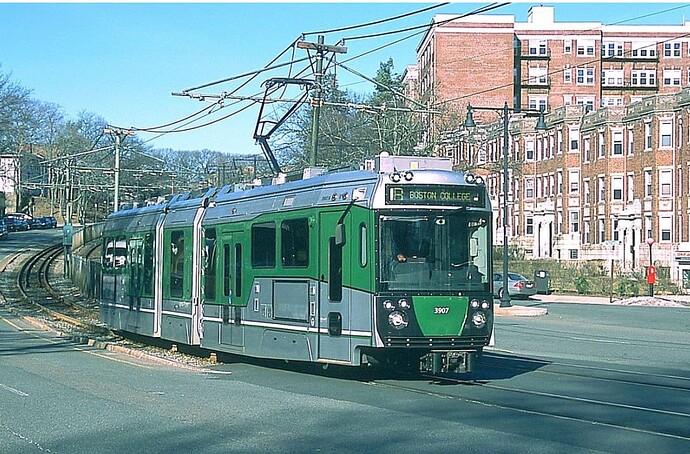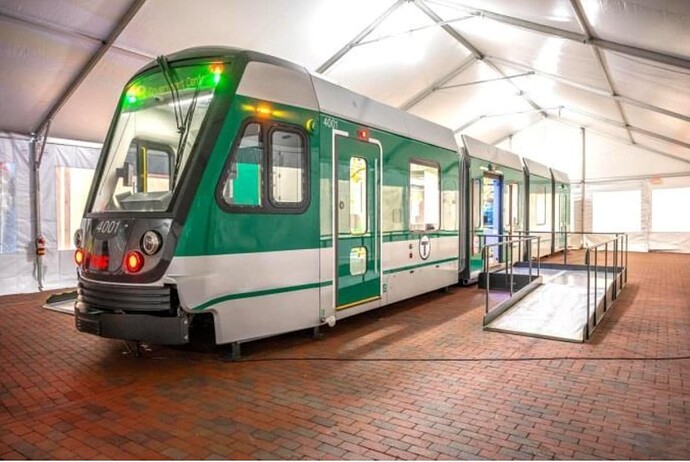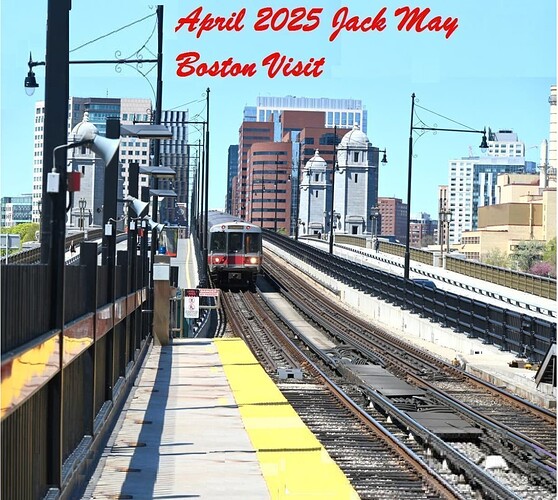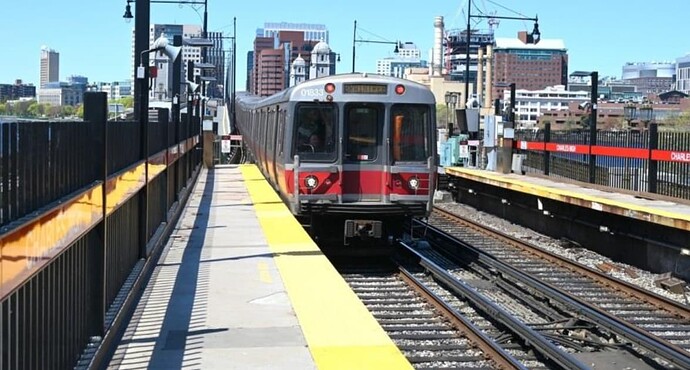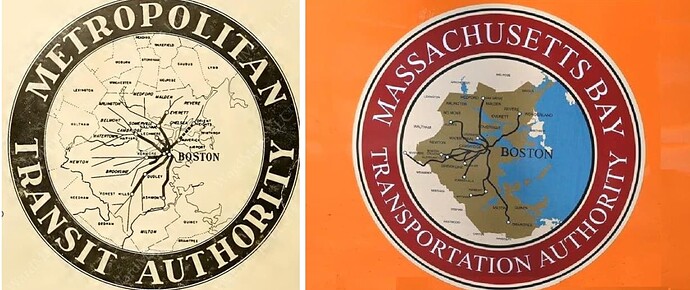With leaves now sprouting on our trees the itch to take a trip to welcome spring became so great I had to react. On a past visit bad weather had prevented me for covering Boston’s Green Line extensions to Somerville and Medford, which the MBTA opened in 2022, to my satisfaction–but the forecast for Monday, April 28 indicated clear skies and pleasant temperatures, perfect for a rerun. And I was also sure I needed a PCC fix as well.
Thus Clare and drove up to the Holiday Inn Express along route 128 (I-95) in Waltham on the preceding Sunday afternoon, which took about four hours. We then enjoyed a good rest rest overnight, and woke up bright and early, ready for the next day’s activities. This trip report is divided into two parts.
react. On a past visit bad weather had prevented me for covering Boston’s Green Line extensions to Somerville and Medford, which the MBTA opened in 2022, to my satisfaction–but the forecast for Monday, April 28 indicated clear skies and pleasant temperatures, perfect for a rerun. And I was also sure I needed a PCC fix as well.
Thus Clare and drove up to the Holiday Inn Express along route 128 (I-95) in Waltham on the preceding Sunday afternoon, which took about four hours. We then enjoyed a good rest rest overnight, and woke up bright and early, ready for the next day’s activities. This trip report is divided into two parts.
After breakfast a 15-minute drive brought us to the park-and-ride garage at the Alewife terminal of the Red Line in Cambridge. I added some funds to Clare’s Charlie Card to pay for a round trip ($5.60), while my Senior card had sufficient funds to pay for lots of ons and offs during my day ($1.10 whenever going through a turnstile, which would be much cheaper than an $11.00 day ticket).
We rode a Red Line train only one stop to Davis Square, where we transferred to a 94-bus to the Medford/Tufts terminal of the Green Line extension, a five-minute ride, which was more than a half-hour faster than riding all the way to Park Street for the transfer (had an 89 bus come first we would have ridden to the extension’s Ball Square station). From there it was ride and photograph, as described below. I made no attempt to visit the Union Square terminal, the only station on the Somerville branch, as my previous experience indicated it was not a good location for photos.
A view along MBTA’s new Medford line looking north from the Magouin Square station, showing a high-floor Kinkisharyo Type 7 LRV operating singly as an instruction car. It is unusual to see single units on the Green line, as almost all revenue service is provided by 2-car trains with one a partly low low-floor unit.
Same place with an Ansaldo Breda partly low-floor Type 8 car at the point of an E-line lashup en route to Heath Street. The MBTA provides commuter service over the former Boston & Maine Railroad’s Lowell line on the tracks beyond the fence on the right side. An Amtrak Downeaster passed on those rails during my photography..
Both types of LRVs are in this telephoto view from the northern end of the island platform at Magouin Square.
Another Type 8-7 lashup, looking north from the East Somerville station of the MBTA’s new Medford line.
After I completed my “work” on the Medford line, where service was quite frequent, we boarded a Heath Street-bound E train and headed for the Museum of Fine Arts station along Huntington Avenue. It should have been a fast ride, but as our equipment left North Station, instead of accelerating, we slowed to a stop at the end of the very long platform. As time progressed the operator indicated we would be moving “any moment now” (several times), but about 10 minutes later he opened the doors and said that passengers could transfer to an Orange Line train if they so wanted. Since we really had no choice because of our destination, we stayed put and were rewarded about a minute later when we began to move, albeit slowly, to Government Center station and then Park Street. Finally we picked up speed–and this turned out to be the only glitch in operations we suffered on our entire day.
I accompanied Clare for the short walk to the museum entrance and left her after making sure she was all set for her visit to the institution’s Van Gogh exhibition.
Below: With Type 7 cars on their eastern (northern) ends, two two-car trains pass at the Museum of Fine Arts station of the MBTA E-Heath Street line.
My next destination would be Ashmont, one of the southern terminals of the Red Line, so I could take in the PCC cars on the Mattapan-Ashmont line. I planned to change from the Green Line to the Red Line at the Park Street complex, located at the end of the four-track section of the trolley subway.
A Breda-built Type 8 LRV at the point of this two car train entering Park Street from the south (west). It is heading for Government Center, one stop beyond, where passengers can transfer to the Blue Line. The well at right contains a stairway leading to the Red Line below.
But before heading to Ashmont, I decided I had time to take some photos of Red Line trains, so instead of proceeding toward the city center and then out to Dorchester from the platforms on the lower level that used to be called Park Street Under, I rode one station westward to Charles/MGH, where the line briefly emerges from its tunnels to cross the Longfellow Bridge to Cambridge. I would get some photos at the eastern end of the crossing, which carries rapid transit trains between its two roadways. This gave me the chance to record the current rolling stock, perhaps for the last time, as the line’s existing fleet is being replaced in its entirety by new Chinese-built cars that are gradually being delivered.
A train of 01800-series cars approaches the southbound platform at this busy stop, which serves the Massachusetts General Hospital (MGH). Three of the four stone towers of the 1908-built bridge are in plain view in this telephoto image, which also shows the Cambridge skyline, including tall buildings housing technology companies that have sprouted near the campus of MIT, the Massachusetts Institute of Technology.
Below: Headed by car 01833 the train arrives at the station. An order of 86 of these stainless steel cars were built by Bombardier for the Red Line in 1993.
Also still in service are MBTA’s 01500, 01600 and 01700-series cars, which are constructed of aluminum and look virtually identical to each other. 76 were built by Pullman-Standard starting in 1969, with an additional 58 built by UTDC being added in 1987. A westbound train of 01600s is shown accelerating onto the bridge, heading toward Cambridge and eventually the line’s Alewife terminal.
While planning this trip, I checked for MBTA alerts and found that a major track/interlocking project was underway on the Ashmont branch of the Red Line, and the only service between JFK/UMass station and the terminal would be provided by two shuttle trains, one on each track, running on a combined 13-minute headway. This was not onerous enough to discourage me (being much preferable to shuttle buses, which were scheduled on other days), and I boarded a Braintree-bound train and got off at what used to be called Columbia station to make the connection. And after doing the up-and-down platform change, I was pleasantly surprised to find that the shuttle service was being supplied by trains of new Chinese cars. Although I had ridden aboard CRRC-built Orange Line trains on a previous visit, this would be my first chance to experience the new Red Line cars. I found the two quite similar, both very austere with regard to interior fittings.
CRRC, China Railway Rolling Stock Corporation, is building 272 cars to replace the entire Red Line fleet. With the equipment being assembled in West Springfield, Mass. along with rolling stock for Boston’s Orange line, the order has suffered major delivery and quality problems, but now may well be on track to completion. The first train of 1900s was delivered in 2019 and then there was a long pause, with construction of the Orange Line car proceeding first. This view of a Red Line shuttle was taken at the Ashmont terminal
:
